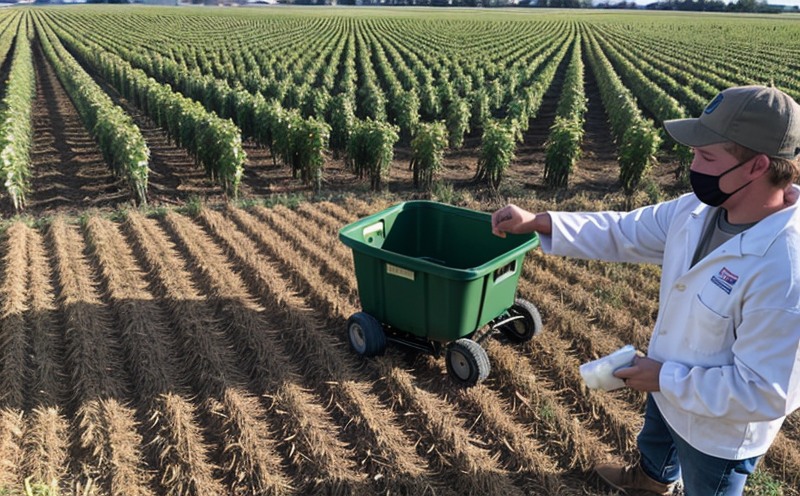Oil Content Testing in Oilseeds
The oil content testing of oilseeds is a critical process within the agriculture and forestry sectors, especially in industries that rely on vegetable oils. This service involves precise determination of the oil yield from seeds such as sunflower, soybean, rapeseed, cottonseed, and others. Accurate oil content analysis ensures optimal processing efficiency, quality control, and compliance with international standards.
For instance, in the case of soybeans, which are one of the most widely consumed oilseeds globally, the oil content can vary significantly based on several factors including genotype, environmental conditions, and post-harvest handling. Understanding these variations is crucial for processors aiming to maximize yield while maintaining product quality.
The testing process typically begins with sample preparation where raw seeds are ground into a fine powder using appropriate machinery. This ensures uniformity which is essential for accurate oil extraction. The extracted oil is then analyzed either through gravimetric methods or infrared spectrophotometry, depending on the required precision and laboratory capabilities.
International standards such as ISO 5427:1986 and ASTM D2387 provide detailed protocols for these analyses ensuring that results are comparable across different laboratories. Compliance with these norms not only enhances credibility but also facilitates trade by meeting regulatory requirements set forth by global organizations like the World Trade Organization (WTO).
Moreover, accurate oil content testing plays a pivotal role in research and development efforts aimed at improving crop varieties through genetic modification or breeding programs. By understanding how different traits affect oil production, scientists can develop lines that offer higher yields with better nutritional profiles.
Understanding the importance of this service extends beyond just the agricultural industry; it impacts various sectors including food manufacturing, pharmaceuticals, and biofuel production where vegetable oils serve as raw materials or additives.
Why It Matters
The accuracy and reliability of oil content testing directly influence multiple aspects of both production and consumption. In terms of production, accurate measurements help farmers make informed decisions about planting schedules, irrigation practices, and fertilization strategies to enhance yield without compromising quality.
- Precision in Yield Estimation: By knowing the exact amount of oil present in each batch of seeds, processors can better plan their manufacturing processes. This leads to more efficient use of resources resulting in reduced waste and lower operational costs.
- Better Quality Control: Consistent testing allows for early identification of any issues during processing stages. For example, if an anomaly is detected in the oil content early enough, corrective measures can be implemented preventing further contamination or degradation of products.
In addition to these direct benefits for producers, accurate oil content testing also contributes positively towards sustainability goals by promoting resource efficiency and minimizing environmental impact associated with overproduction.
Customer Impact and Satisfaction
Accurate oil content testing services have a direct positive impact on customer satisfaction through several channels:
- Improved Product Quality: By ensuring consistent oil content, we help our clients deliver high-quality products that meet strict industry standards.
- Enhanced Reputation: Our precise measurements enhance the reputation of our clients in their respective markets fostering long-term relationships and trust with customers.
- Competitive Edge: With reliable data supporting their operations, companies can stay ahead of competitors by optimizing resource usage efficiently.
We pride ourselves on delivering accurate results every time, backed by state-of-the-art equipment and experienced personnel. Our commitment to excellence has earned us a reputation as leaders in agricultural testing services worldwide.
International Acceptance and Recognition
Our oil content testing service is internationally recognized for its accuracy and reliability. Compliance with global standards like ISO 5427:1986 ensures that our results are accepted across borders making it easier for clients to participate in international markets.
The International Organization for Standardization (ISO) sets stringent criteria which all participants must adhere to ensuring consistency and comparability of results worldwide. By meeting these requirements, we enable seamless integration into global supply chains thereby enhancing business opportunities for our customers.





